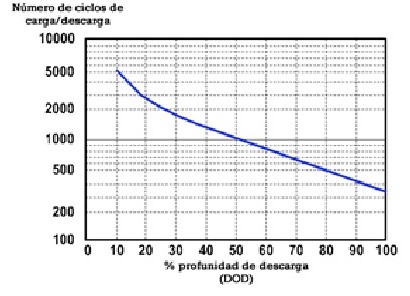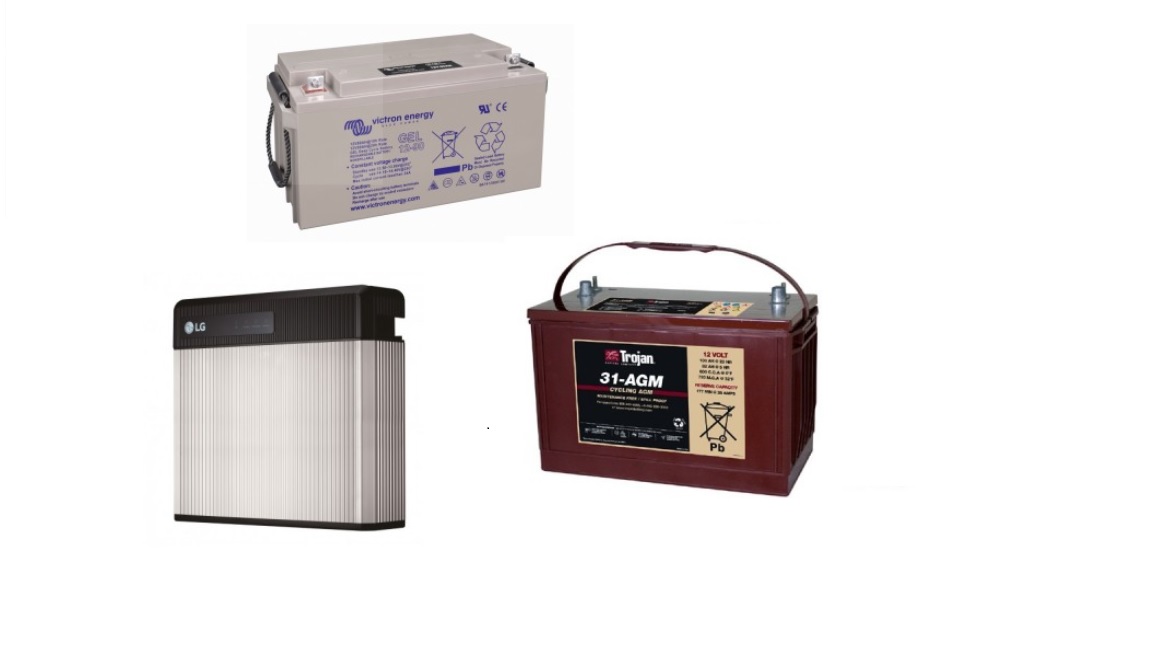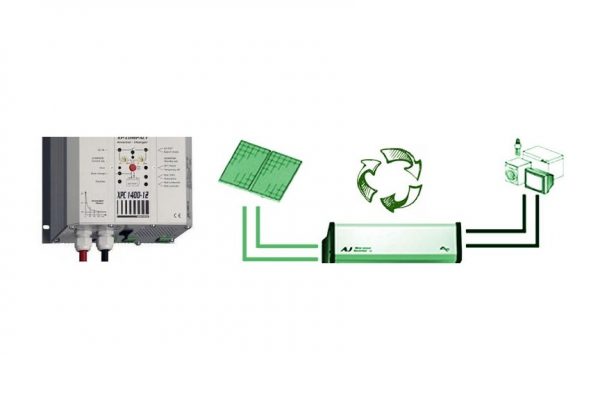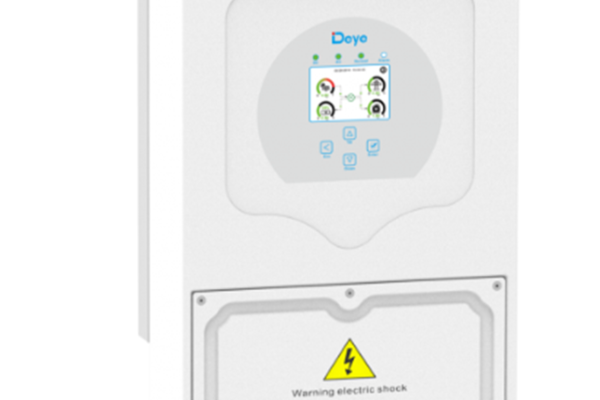There are currently several solar battery options for electrical energy storage that can be applied to solar photovoltaic installations. In essence, batteries have the ability to convert electrical energy into chemical energy so that it can be stored and then converted back into electrical energy when needed for consumption. In Spanish, batteries can also be called “pilas” or “acumulador”. Their physical and technical characteristics can vary greatly depending on the option available on the market. The basic parameters that must be taken into account in any battery are Voltage, Current Intensity, Capacity, Electric Charge, Resistance, Mass, Yield, Charge/Discharge Constant and the Memory Effect.
The Capacity is measured in Ampere-hours (Ah) and is one of the basic parameters of a battery to evaluate the amount of energy the equipment can store for a given discharge time. For example, when a manufacturer gives us the capacity in C100 (or rate in 100 hours) it means that they are giving us the amount of charge that is possible to extract from that battery in 100 hours at a temperature of 20 º C until the voltage between its terminals reaches 1.8V per glass. As the discharge time gets shorter, the capacity of the battery also decreases. Usually the value of C100 is used for calculation purposes.

Another important parameter to consider when choosing a battery is the maximum depth of discharge allowed and cycles of each product. In isolated solar photovoltaic installations and using equipment that has a low discharge capacity will mean that more equipment will need to be installed in order to guarantee its expected functionality without exceeding the maximum permitted depth of discharge. In general, the greater the depth of discharge, the less life cycles the battery will be able to give us, as can be seen in the following graph:

The following is a summary of the main characteristics and differences between the different types of batteries for photovoltaic solar energy applications:
- Monoblock batteries: Based on traditional lead-acid technology. Each cell of the battery provides 2 V between the anode and cathode. They are used for small solar photovoltaic installations. The maintenance of the monoblock batteries is minimal. Their main advantages are their good value for money and that they are manufactured extensively. Unfortunately not everything is an advantage and they are equipment that have a high risk of environmental pollution if they are not managed correctly at the end of their useful life, their weight is considerable due to the amount of energy stored and the risk of gas emissions means that they cannot be installed in motor homes or closed spaces with little ventilation.
- Stationary Batteries: Long life batteries designed for daily use. Currently many of the models available on the market can exceed 20 years of useful life. Their technical characteristics make them very well adapted to the operation of a photovoltaic solar installation and its consumption because their daily cycles are regular and stable over time. These equipments are specially prepared to support deep discharges (up to 80%) which makes them very attractive for applications of isolated solar photovoltaic installations. Usually, stationary batteries can offer around 1500 cycles with a depth of discharge of 60%. Stationary batteries are significantly more expensive than Monoblock batteries but also have a much longer life.
- Maintenance-free sealed GEL or AGM batteries: Both types of batteries have the particularity that they do not need maintenance and are hermetically sealed products so that they can be used in any location without restrictions. Unless otherwise indicated by the manufacturer of the equipment, it is not necessary for it to be in a horizontal position. The AGM type batteries are a technological evolution of the GEL batteries. AGM batteries allow a greater depth of discharge than GEL batteries. The AGM type also allows a greater delivery and absorption of electrical current with hardly any heat emission.
- Lithium Batteries: They are equipment that stand out for their small size, high durability and no need of maintenance. They offer excellent performance because they allow up to 6000 cycles with discharge depths of 80%, greatly improving the durability of the equipment with respect to other available technologies. It is usual that any technical-economic study carried out for a specific project concludes that the greater durability of lithium batteries more than compensates its economic over cost. During the last years, lithium batteries are becoming the new standard for solar installations. The origin of lithium batteries can be found in the batteries of small electronic equipment such as mobile phones. This technology has evolved a lot and nowadays lithium batteries have practically no memory effect anymore. They are available in both 24 and 48V. Their main disadvantage is related to the difficulties related to temperature changes and total discharges. They cannot be installed directly under solar exposure. It is recommended to validate the compatibility with the solar inverter used in each case.
It is necessary to take into account that any solar installation must be designed and sized by an experienced technical team that will ensure that all the expected functions of the installation are fulfilled, maximizing the useful life of the equipment.
Finally, it is necessary to comment that there are other technological options for the accumulation of electrical energy that have no application in solar installations due to their technical characteristics and it is for this reason that they have not been mentioned in this article.
On our website, you can find different models and options of batteries that can be used for solar photovoltaic installations both connected to the grid and isolated. If you have any additional questions, please do not hesitate to contact us through our e-mail and we will be happy to help you.
If you want to be updated on all the news of tienda-solar, do not hesitate to follow us on Facebook.





